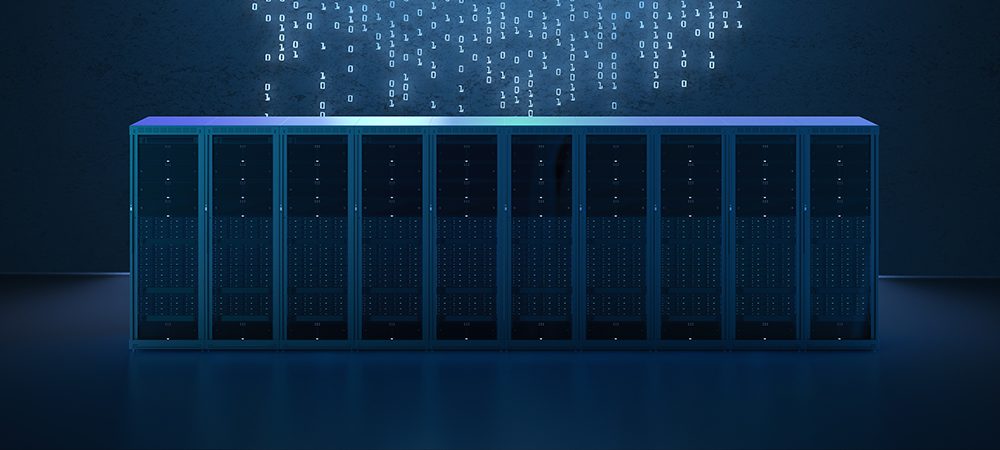For this month’s Editor’s Question, we asked industry experts ‘how has the cloud impacted data centres?’. Here’s what they had to say…
Scott Gordon, (CISSP) CMO, Pulse Secure
Data centres must up security to ride the hybrid wave
In Q318, for the first time, quarterly vendor revenues from IT infrastructure product sales into cloud environments surpassed revenues from sales into traditional IT environments. According to IDC, 50.9% of the total worldwide IT infrastructure vendor revenues were derived from cloud.
Even with the popularity of private, public and hybrid cloud, the benefits of having dedicated data centre capacity is still critical to an overwhelming number of enterprises. Performance, data sovereignty, resiliency and exacting regulatory requirements all feed into a need to maintain racks in strategically important data centres.
At least for the short term, even those with cloud-first business models are not necessarily cloud exclusive. The current position for many organisations is a hybrid mode which mixes on-premise, which could be considered as their own data centres or co-lo, with public/private cloud and often SaaS.
This diverse model can often offer the best of all worlds by accommodating different business stakeholders from agile developers to the keepers of highly tuned legacy applications that don’t play nicely in a public cloud.
Other elements such as security are also evolving to serve this hybrid IT position. One of the most critical changes is the emergence of a zero trust security model.
In simple terms, zero trust does away with the assumption that all access from within the corporate network is trusted and instead verifies everything.
This shift makes multi-cloud access management critical and modern enterprises are deploying secure access technologies such as single sign on (SSO) and software defined perimeter (SDP) to simplify the process.
SDP aids this by separating the control plane of user authentication and access with the data plane connecting users and applications.
Although not a new concept, it has only been within the last few years that it has started to rise in popularity with analyst firms predicting strong 35% CACG over the next five years – in part fuelled by the needs of hybrid IT.
Integrating security controls that span on-premise and cloud is also a major trend. This has led to deeper support for open standards for exchanging authentication and authorisation data between parties.
Standards such as Security Assertion Mark-up Language (SAML) and OAuth (Open Authorisation) have gained more traction over the last few years and will become increasingly critical for delivering a zero trust future.
Data centres and cloud providers need to be aware of this shift and be able to support this switch towards zero trust to remain a valuable part of a hybrid IT ecosystem that looks to be with us for the foreseeable future.
Mat Jordan, Head of EMEA – Procurri Europe
Cloud computing has been a revolutionary development in information technology and has already transformed the way that both businesses and individuals work with their data and devices.
For consumers, social media and video streaming are the most popular applications but for businesses, there’s really room for all aspects of their IT to be completely changed and streamlined to become faster, more efficient and more secure.
One such opportunity – albeit an extremely large one – is for data centres to move from physical premises to the cloud. Cisco estimates that by 2021, 95% of total data centre traffic will be cloud-based; yet realistically we see businesses acting sluggish in making the move across.
The cloud has, and will continue to, impact data centres in many ways. First and foremost is that of data centre architecture. Long considered to be large collections of bulky and often dated hardware, most added equipment to it every time a system or process changed.
This resulted often in lots of required physical space, high energy bills and environmental concerns in the eventual decommission of such centres, or parts of them.
Yet with the advent of technologies developing so quickly that both they and consumer needs require adaptation on an almost daily basis, such clunky and quirky architecture has been rendered almost useless: businesses need to be able to pivot rather than persevere and act in an agile fashion.
This has seen the most recent data centres trend be for them to change their core entirely. Instead of bespoke product catalogues physically stationed a reasonable distance from a company’s head office, cloud-based data centres are universal and rely on a shared infrastructure to realise economies of scale as quickly as possible.
Devices that are stored physically are uniform, designed to be easily replaced by others and to re-route traffic in the event of a failure. The knock-on impact of this is that this equipment is cheaper and more efficient to heat, cool and store.
However, as the cloud contains more and more data and the focus is taken away from devices and hardware, fewer items in data centres are required.
Agility is favoured over capacity and so the reliance is less on physicality, more on adaptability – which in itself fits nicely into cloud-based services.
How the cloud will go on to effect data centre architecture, operations and usage is anyone’s guess, but one thing is for certain: businesses need to be reconsidering their current set-up in favour of moving to a more adaptable model that is able to continually evolve to meet customer and business needs.
Procurri’s teams are at the forefront of such developments and so are able to not just advise but also tangibly help in identifying, procuring and moving toward new data centre solutions.
Sara Baack, Chief Product Officer at Equinix
Just as video killed the radio star, so will be the fate of many of today’s traditional systems and technologies as the rapidly changing digital economy makes way for new digital infrastructures and operations (I&O) to emerge in their place.
This is true across the IT stack and as a cloud-first mindset takes hold, I&O leaders face the reality that the IT they have known for decades is dramatically changing and data centre infrastructure will not be spared.
As workloads move to the cloud, enterprise data centre footprint needs recede – and since companies have an imperative to innovate, often in a self-funding way, shifting an on-premises data centre to a hybrid cloud future can reduce capital expenditures and labour costs while simultaneously boosting agility.
The enterprise owned-and-operated data centre is on the endangered species list. But let’s not write any obituaries yet. Enterprises still have critical data centre needs, but those needs are changing dramatically.
Today, IT leaders are being called on to deliver high-performing, data-intensive, dynamic applications and IT services to users distributed globally. Businesses’ I&O need to be proximate to employees, partners and customers out at the edge to deliver a higher quality of experience.
And traditional enterprise data centres, centralised and siloed from the many outside IT services being consumed in the modern marketplace, simply aren’t suitable to meet this need.
Companies are beginning to adjust to this by re-architecting their corporate IT infrastructures in favour of global colocation and interconnection points of presence.
Instead of being centralised and proximate to HQ and operations staff, these data centre deployments are distributed, close to users and services. Neutral colocation facilities, like those that Equinix operates worldwide, have emerged as the natural integration points between cloud services, private data stores and other supply chain partners and customers.
This is why 46% of the Fortune 500 now operates at Equinix.
The world of IT is in the throes of great change. And, while none of us knows exactly what the future will bring, Equinix’s goal is to be constant in helping its customers solve problems and steward them through their own Digital Transformations, whatever form they may take.
It’s true that traditional, on-premises data centre are dying as disruption shakes up the global industry, but something better is coming and the opportunity is real.
Click below to share this article


